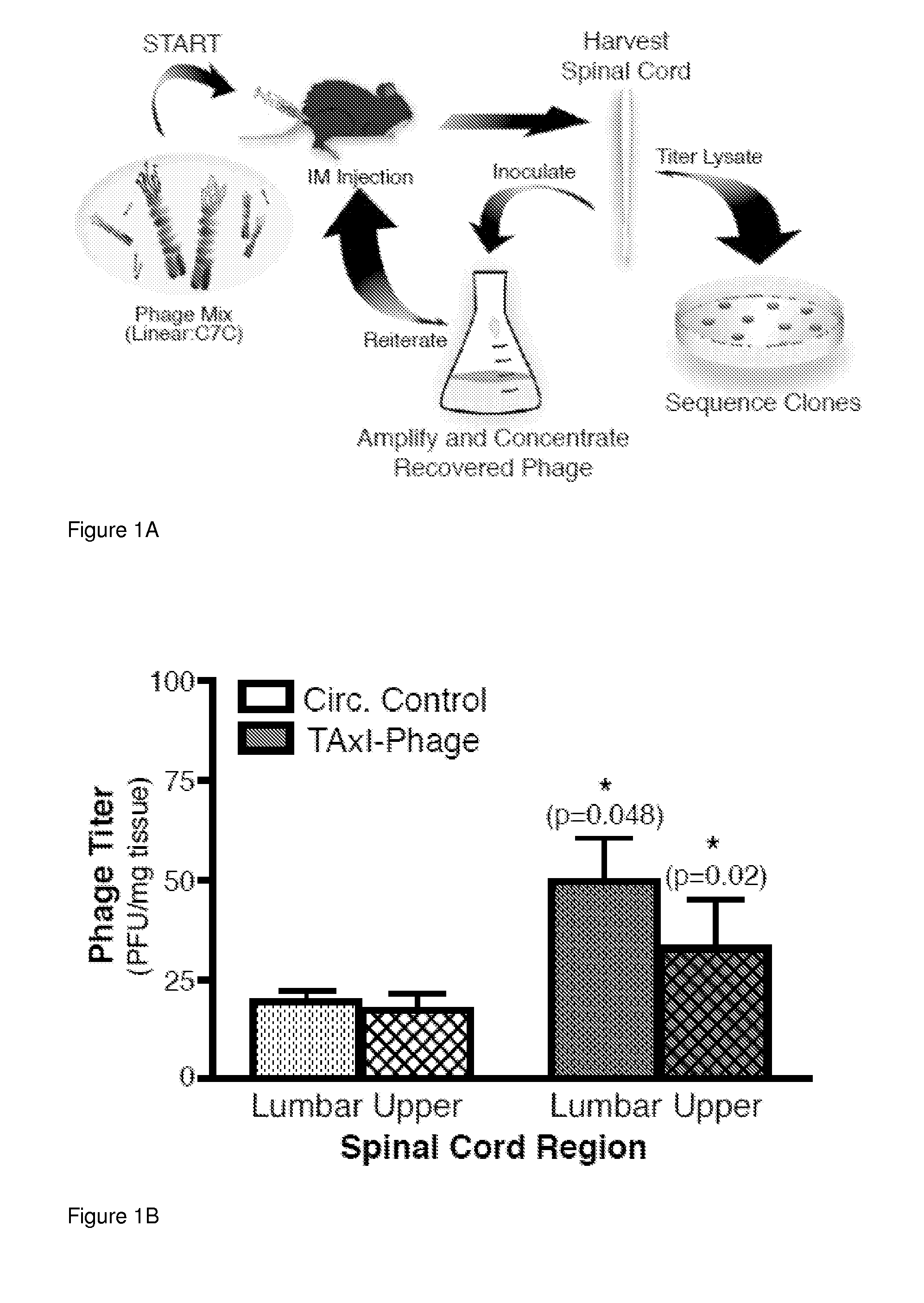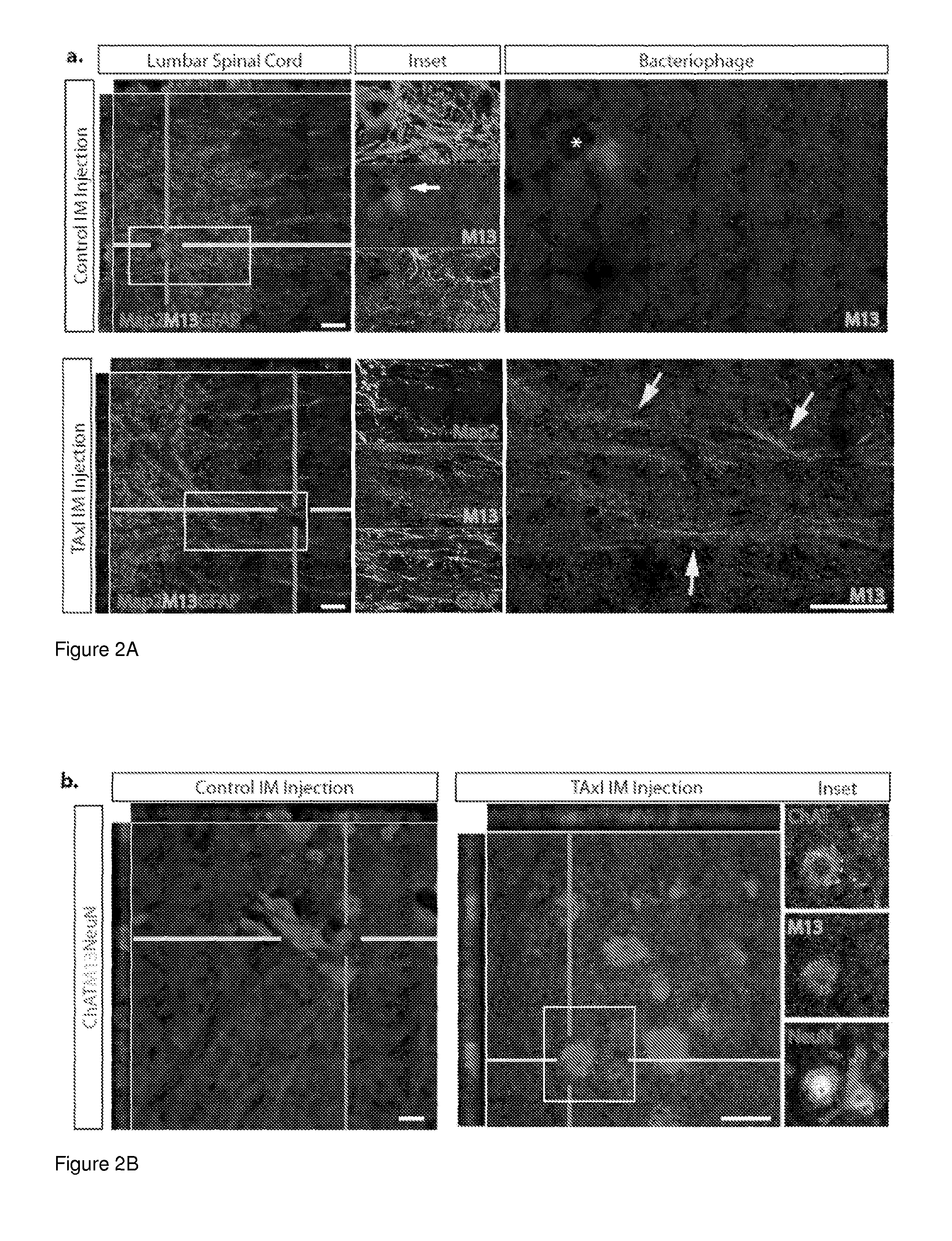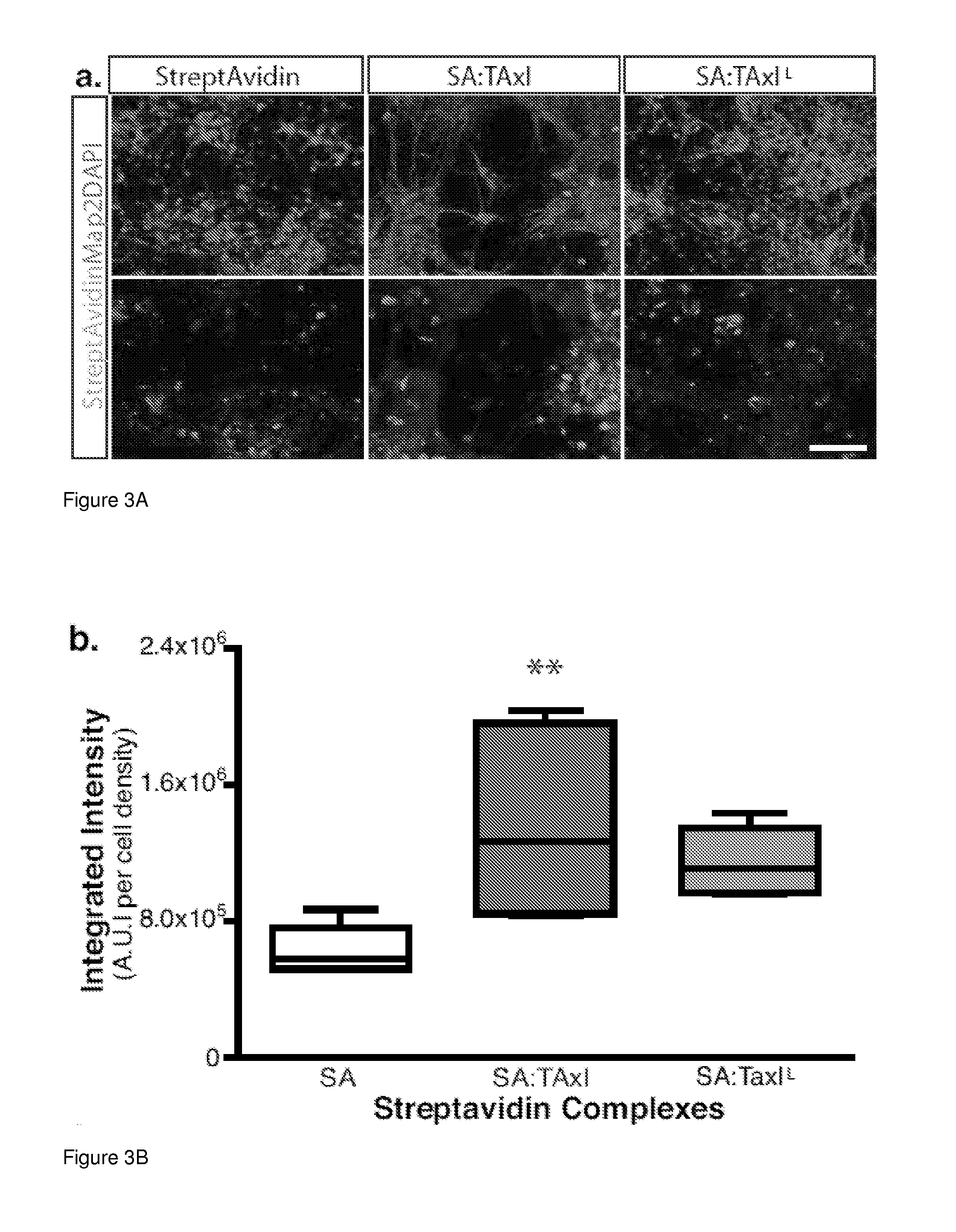Retrograde transport peptide and use of same for delivery to central nervous system
a technology of transport peptides and transport peptides, which is applied in the direction of peptides/protein ingredients, drug compositions, peptides, etc., can solve the problems of limited efficacy of neurodegenerative diseases, hampered the use of recombinant neurotrophic factors and proteins, and slow the progression of alzheimer's disease, so as to slow or stop the progression of disease, the onset or progression of huntington's disease may be delayed
- Summary
- Abstract
- Description
- Claims
- Application Information
AI Technical Summary
Benefits of technology
Problems solved by technology
Method used
Image
Examples
example 1
Targeted Axonal Import (TAxI) Peptide Delivers Functional Proteins into the Spinal Cord after Peripheral Administration
[0101]This example demonstrates a peptide capable of delivering protein complexes and proteins into the spinal cord motor neurons using targeted axonal import (TAxI). The TAxI peptide is shown to enhance bacteriophage accumulation in the soma of spinal cord motor neurons and enrich NeutrAvidin accumulation in the spinal cord and brain after intramuscular administration. Notably, TAxI-Cre recombinase fusion proteins induced selective recombination and tdTomato expression in motor neurons of reporter mice after intramuscular injections. This demonstration of motor neuron-targeted delivery of functional proteins to the CNS establishes the clinical potential of this technology for minimally invasive administration of CNS-targeted therapeutics.
[0102]First, a strategy was developed to screen a recombinant phage display library in vivo to identify peptides that mediate del...
example 2
Identification of Additional Transport Peptides Capable of Delivery to CNS
[0172]The methods described above in Example 1 also led to the discovery of additional transport peptides. The following peptides were successfully transported to CNS sites after injection into gastrocnemius:
[0173]
Amino AcidWith FlankingSEQClone / NameSequenceSequenceID NO:8aPFSACPFCGGG3*; 100808LQATPSASACLQATPSACGGG 4; 112407ISPSLSSSACISPSLSSCGGG 5: 124802TSTGFRGSACTSTGFRGCGGG 6; 134042TSTAPHLRLRLTSR(none)7*SEQ ID NO: 3 is CPFC, which shows the two amino acid 8a peptide PF flanked by cysteines, illustrating one optional form of this peptide.
example 3
Additional Methods of Peripheral Administration of Transport Peptide
[0174]The methods described above in Example 1 were modified to explore alternative modes of delivery to intramuscular injection. Intraperitoneal injection was attempted using peptides 2404, 2404Q, and 4042, and proved successful, resulting in robust delivery to the CNS.
PUM
| Property | Measurement | Unit |
|---|---|---|
| molecular weight | aaaaa | aaaaa |
| molecular weight | aaaaa | aaaaa |
| molecular weight | aaaaa | aaaaa |
Abstract
Description
Claims
Application Information
 Login to View More
Login to View More - R&D
- Intellectual Property
- Life Sciences
- Materials
- Tech Scout
- Unparalleled Data Quality
- Higher Quality Content
- 60% Fewer Hallucinations
Browse by: Latest US Patents, China's latest patents, Technical Efficacy Thesaurus, Application Domain, Technology Topic, Popular Technical Reports.
© 2025 PatSnap. All rights reserved.Legal|Privacy policy|Modern Slavery Act Transparency Statement|Sitemap|About US| Contact US: help@patsnap.com



